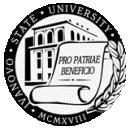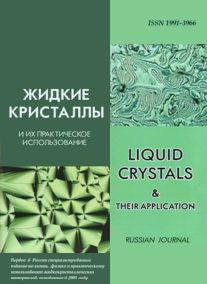|

|
Liquid Crystals and their Application
Russian Journal Zhidkie kristally i ikh prakticheskoe ispol'zovanie Жидкие кристаллы и их практическое использование |

|
|

|

|
|
|
Menu

|
|
|
|
|
Zhidk. krist. ikh prakt. ispol'z. = Liq. Cryst. and their Appl., 2015, 15 (2), 86—93. |

|
|
Features of Cotton Fiber with the Varying Maturity Degrees and Parameters of the Liquid Crystal Zone Near the Fibers Surface
|
A. K. Izgorodin, D. Yu. Trusov, R. V. Mavrin
|
Author affiliations
Ivanovo State Polytechnic University,
20 March 8 St., Ivanovo, 153000, Russia
E-mail: izgorodin@ivgpu.com
E-mail: kompylator@mail.ru
|
|
Abstract
Cotton fibers of different maturity have been investigated. Such fibers characteristics as a maturity degree, an elastic modulus, torsional shear strength and strain parameters of the fiber structure at the molecular and supermolecular levels were determined using IR-spectroscopy and X-ray diffractometry. The parameters of the liquid crystal medium in the fibers zone of Krasnodar cotton of different maturity were established. The analysis of the characteristics of such fiber properties as strength, resistometric and frictional characteristics of the fiber structure at the molecular and supramolecular levels and the analysis of such parameters of the liquid crystal as the transition temperature from mesomorphic into isotropic state and the width of the nematic zone around the fibers with impaired homeotropic orientation were performed. Based on the performed analysis it was found that reducing of the fibers maturity degree in 5 times leads to decrease of the width of the nematic liquid crystal zone near the surface of the fibers with impaired homeotropic orientation in 2–2.5 times; the optical density of the fibers is reduced in 2÷2,4 times, the disorientation angle of crystallites in fibers increases and the size of the crystallites decreases on 10÷ 15%, which correlates with a decrease on 8÷14% of the value of the transition temperature of the nematic phase into the isotropic state near the surface of the fibers. Thus, determination of the parameters of liquid crystals near the surface of the fibers can replace complicated and expensive studies using IR spectroscopy and X-ray analysis.
Keywords: fiber, liquid crystal area, nematic phase, temperature, van der Waals forces, infrared spectrum, X-ray diffraction, crystal, elastic modulus, birefringence, electrical resistance, functional group, molecular and supramolecular level, identity period, homeotropic orientation, isotropic state
|
|
|
|
|
|




